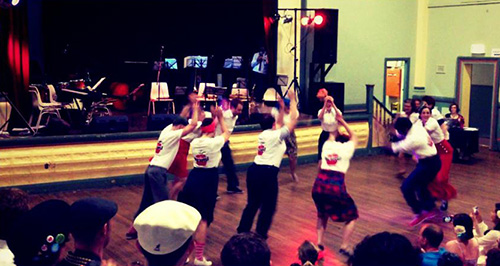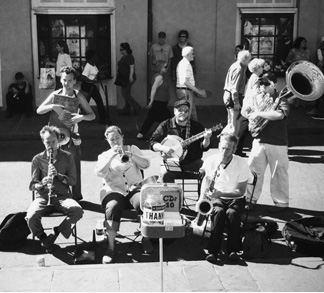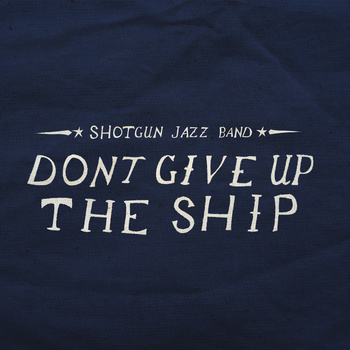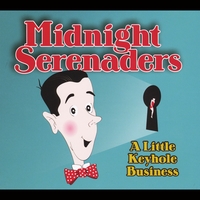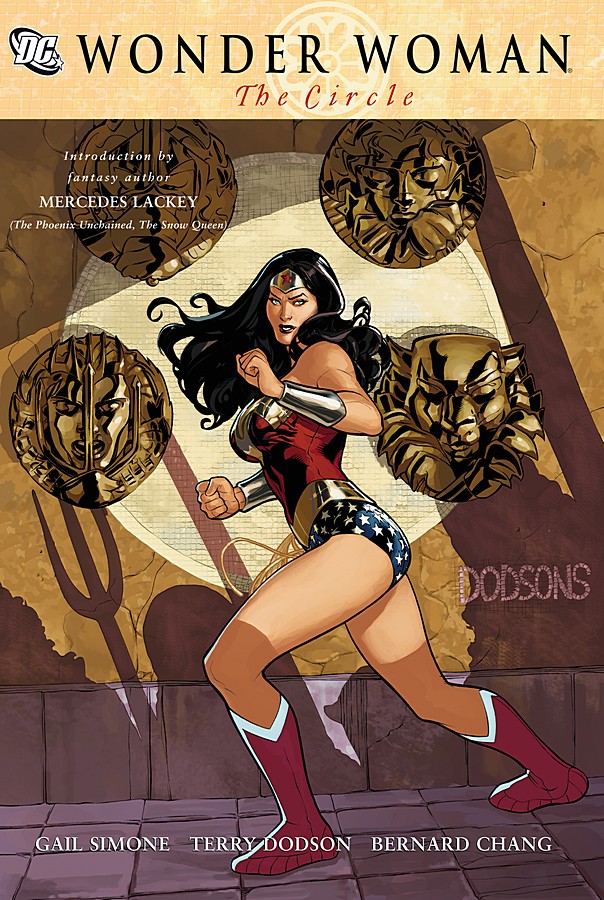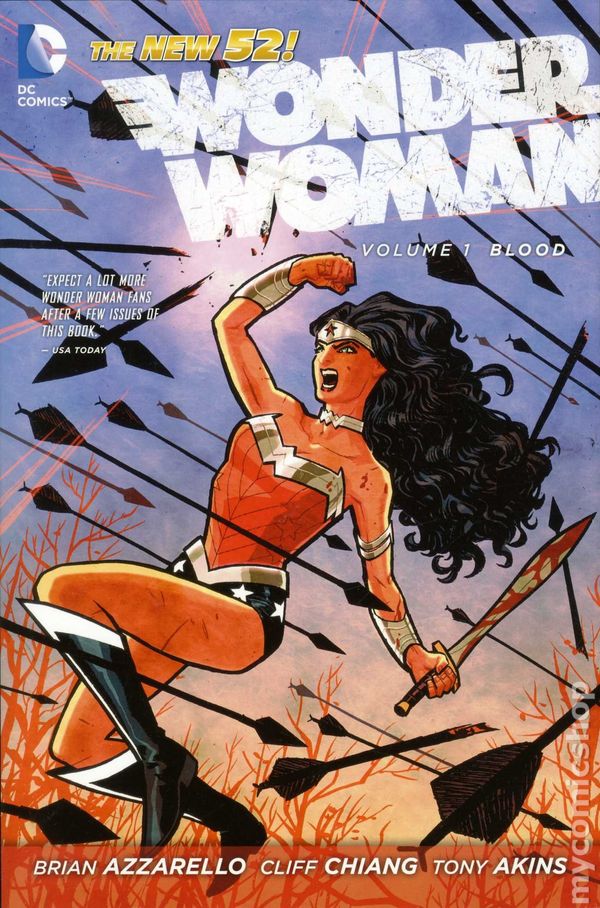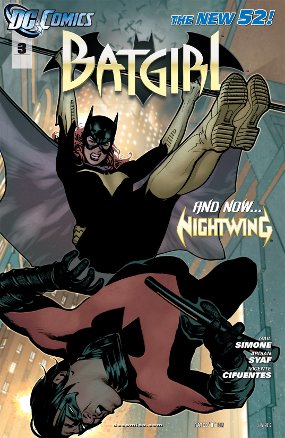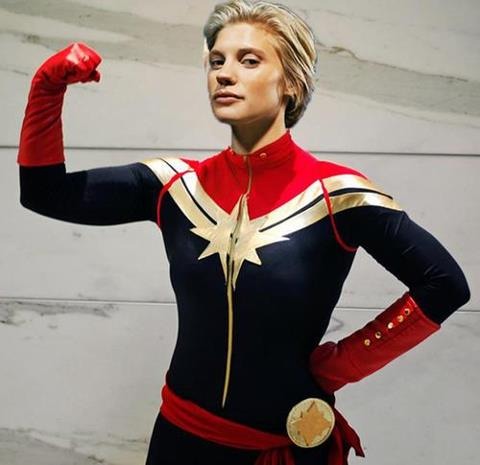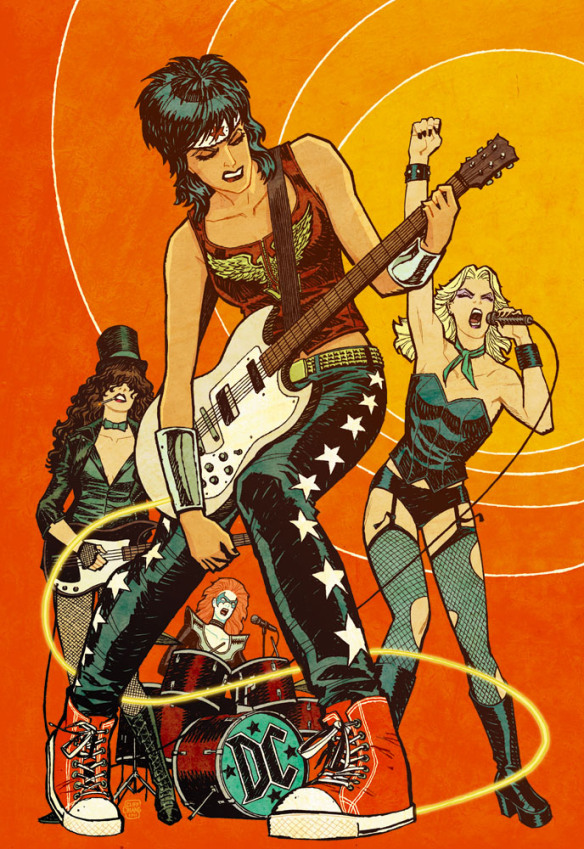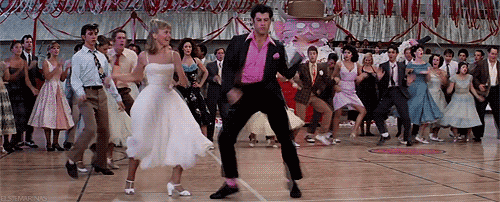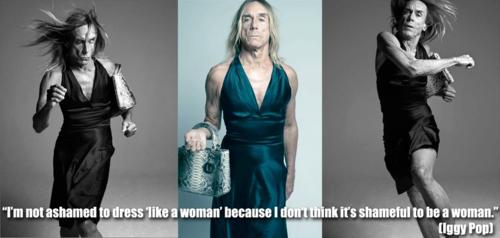Category Archives: lindy hop and other dances
pride
Shotgun Jazz Band
Peter Loggins put me onto the Shotgun Jazz Band, and I bought their second album One Drink Minimum because I like a bit of rowdy, scraggly, NOLA hot jass.
Browsing the interkittens recently (aka their bandcamp page) I realised they’ve just released a third album, Don’t Give Up the Ship.
I liked the second, live, album, but I really this third one. It’s a bit tighter, which is kind of what you’d expect from a studio album rather than a live one, but it still has the attitude and energy of the live recordings. So I call this a win.
Yes, but there are approximately nine million little bands doing ‘NOLA’ style street jazz, why should you give a crap about this one?
Firstly, you know some of the people in the band:
Marla Dixon – Trumpet and Vocals
Christopher Johnson – Tenor Saxophone
Michael Magro – Clarinet
Peter Loggins – Trombone
Tyler Thomson – Bass
Justin Peake – Drums
John Dixon – Banjo
Secondly, you should support anyone who’s out there recording and playing hot jazz. Not just the people you know. It’s just ten bucks, ya tightarse – that’s less than a movie ticket. And buying an indy band’s album tells them someone is listening, and that they should keep going. Even if that means that you think they really suck, so they really should keep practicing.
Thirdly, the songs on this album are quite important ones. If you’ve been introduced to some of these standards by big names like the Preservation Hall Jazz Band, then you should really be exploring other versions, so you can understand why some songs become standards.
Fourthly, you should buy these versions, because they actually have some personality. There’s something interesting going on here. These people aren’t just banging shit out. They’ve got some cred.
And, finally, if you care about this sort of thing, this is an album full of good dancing music.
My highlights:
Old Man Mose – Has a nice, sprongy beat that only a really good, swinging band can achieve. They’re not just banging pots in there (except when they are). They’re making jazz. This a pretty fierce, exciting rhythm, coupled with a fun call-and-response chorus that makes you feel like jumping around. Great dancing.
Creole Song – I luuurve this song, and I have to admit, seeing this on the track list was what convinced me to preview the album in the first place. Sure ‘Shake that thing’ is a great, important standard, but Creole Song is fun, and you don’t see it on as many albums.
Weed Smoker’s Song – Something a bit slow and miserable. I usually tag these ‘necrophiliac blues’ in my collection, so’s I know where to go when I’m looking for something with a nice, mournful edge. I really like this song. You know that expression ‘stomping the blues’? Well, yes.
Silver Bell – This one has a bunch of energy and is lots of fun. I just LIKED IT, ok?
The Peanut Vendor – I probably wouldn’t play this at a lindy hop gig, but I would play it in my house so I could dance around the lounge room. Si? SI! Oui? OUI! It is probably my favourite song on the album.
The only thing I regret about buying this album, is buying it as downloads from bandcamp. No liner notes. No nice, pretty packaging to fondle.
[EDIT] Everyone! Superheidi did some research and discovered ‘Peanut Vendor’ is a ‘secret’ track.
NOT SECRET ANY MORE, JAZZ BAND![/]
all of the things
It’s 14*C here, but it feels 7, which is VERY COLD for Sydney. I hate the cold, which is why I didn’t like living in Melbourne, where the lindy hop is better, but the weather is not.
Sydney is beautiful. It is that city you see in the tourism ads – beautiful beaches a short city bus trip from the CBD. It has all the culture stuff Melbourne does, only people in the galleries and bars and music venues are wearing thongs or tshirts and their scarves are affectations not necessity.
I really don’t have much to write about right now. I’m a bit busy – got a few events to run (three at last count), classes tonight to prepare for, practice tomorrow to think about. But I do have a new CD or two. I saw lovely Leigh at Unity Hall on the weekend and he gave me his band‘s new CD ‘Australiana’. It’s not danceable music at all, which is really quite nice.
My copy of the Midnight Serenaders‘s new CD ‘A Little Keyhole Business’ arrived, and it’s not so great, which is disappointing. I reckon their second album is the best. But they’re a fun band, and I bet they’re superfun live, so it’s nice to support them.
I’m waiting on a CD or two from a Very Famuss Musician to arrive. Their publicist asked if I wanted one, and I assume she wanted me to review it or talk it up or whatevs. I’ll write a review when it gets here, and we’ll see what it’s like. I have to say: there’s nothing more exciting than a Very Famuss Musician you admire asking if they can send you a copy of their CD. Even if it is their publicist asking.
[Meanwhile, I’m listening to the New Sheiks’ new CD ‘Australiana’ right now, and it’s so very good. I had thought about writing a post about the way I/we listen to music across genres, and how musicians play across genres, and how that’s important, but I don’t have the brain for it right now.]
The little red counter on my email icon keeps ticking over. People are responding to the storm of emails I sent out yesterday. I’d finally gotten it together after a couple of weeks of dodgy health, and did some admin work. Working those contacts. The biggest part of my workload is maintaining contacts. With musicians, with venues, with other event organisers, with sound engineers, with visiting (or possibly-visiting) dance teachers, with local dancers, with artists and designers… there’s really a lot of leg (and mouth) work to be done. Lots of people to talk to and telephone and email. And nothing’s harder when you’re feeling a bit rough than getting it together to have a sensible conversation with someone you don’t really know.
I’ve stopped reading a lot of the blog posts and bits and pieces discussing gender in the lindy hop world. Mostly because most of them aren’t terribly good. I don’t think everyone should learn to lead and follow. But I do think every lindy hopper should be able to solo dance competently and confidently. You can draw your own euphemism if you please. I don’t see the point in arguing for women leads. If you can’t accept the fact that women are as competent leads as men, then you probably don’t know much about lindy hop. Or men and women. And you aren’t worth my time. Women should just lead if they want to. The end. I reckon it’s more important for the male leads to realise just how much better most of the women leads around them are, and lift their game. More importantly, particularly in scenes with fewer leads than follows, the male leads need to get up off their arses and lift their game: the women dancers around them are so much better than they are, they’re turning to solo dance out of desperation. Desperate for a challenge. In sum, the best way to maintain the heteronormativity of lindy hop is for men to be really fucking good leads. Right?
No, I’m not convinced either.
I haven’t done a heap of DJing lately. The Roxbury, one of Sydney’s only proper dancer-run lindy hop events has folded forever. Sad times. That was my favourite DJing venue. There’s still Swing Pit, but I quite liked having an event I could go to and have no responsibilities – just turn up late if I wanted, dance as much as I wanted, leave when I wanted. And if there was a problem with the sound, I didn’t have to fix it.
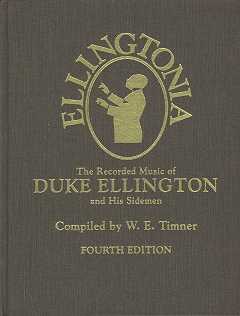
I did buy a copy of Ellingtonia, the Duke Ellington discography. It’s great, but the format of each entry is kind of annoying – instead of listing each musician by name, their initials are used. This sucks, because it means you have to flick back to the guide to figure out who’s who. Makes sorting your music collection really tedious. But then, I think it was hand-typed. It’s certainly self-published. So typing out every name would’ve been a bum.
Duke Ellington, aye. Just when I think I’ve gotten over him, I hear something new, and he draws me back in. I’m really enjoying him in 1941 atm. Again. My current favourite songs is ‘Goin’ out the Back way’ from ’41, which I heard a DJ playing in a smallish dance comp somewhere in the states or Canada. It’s the perfect lindy hopping song. Which of course is the perfect solo dancing song.
Solo dancing has really changed my perception of tempo and speed. Nothing’s too fast when you’re dancing on your own. Which I guess relates to the challenges of following: when you follow, you can’t really change the ‘speed’ or ‘tempo’ at which you and your partner are dancing. The lead gets to decide how many steps you both take. Whether you swing out like crazy people or just step gently through some nice rhythms. When you dance on your own, you get to decide everything. But this has also informed my leading lately. And I’m simply not a terribly talented follow. I would quite like to be a brilliant follow, but it just doesn’t gel for me. How even does following work?
Perhaps my biggest problem while following is that that I just forget I’m not leading, and I introduce steps or rhythms which are ignoring what the lead is doing. And that’s not cool, whether you’re leading or following. So, you know. Leading. That’s where my brain is at. I actually think that you have to decide whether you’re a lead or a follow, if you really want to level up your dancing.
Sure, you can do both and that’s cool. But if you want to get really good at one, you have to dance that one exclusively for a while at least. Because there’s a significant part of your dancing which isn’t conscious decision making. It’s an unconscious response to what’s going on. When I’m leading, I’m responding to what the follow is doing (where their weight is, the tension in their body, the shapes they’re making, the rhythm or timing they’ve got going on), and I respond by initiating something that develops their theme. When I’m following, respond by responding. Sure, I can bring my shit, but someone has to lead, and someone has to follow. They’re different roles, and particularly when you’re dancing at higher tempos, you gotta have a clear idea of who’s doing what. This opinion could really just be an expression of aesthetic preferences: I like to see a clear lead and follow in a partnership, not a muddied, blurry mutual exchange. Not because of politics, but because of physics and biomechanics. And rhythm.
Lennart Westerlund says this thing: “yes, you have the steps, but you do not have the rhythm. I cannot see the rhythm.” He said this about a million times while he was here, and eventually someone in a small teachers’ session asked him “Can you demonstrate the difference? I don’t understand what you mean by ‘see the rhythm’.” So he danced a phrase or two where the rhythm wasn’t clear. Then he danced a couple of phrases where it was very clear. It was quite stunning: I felt all my muscles jump and leap in a real, physical Pavlov’s lindy hopper effect.
So when I watch someone dancing, I don’t want to see a sort of vague blurring of steps. I want to see the rhythms, the shapes, the transfers of weight. I don’t just want to see which foot a dancers weight is on, I want to be able to see which part of the dancer’s foot is on the ground, and whether or not their weight is committed to that particular part of the foot. I want to see muscles recruited efficiently, and turned off when they’re not needed. I really want to see a nice, swinging timing. And I want to feel that leap and jump in my own muscles as I watch. So, I guess I want to see someone lead, and someone follow. I don’t care if you’re taking turns in each role during the dance, but you can’t both drive. Someone has to lead, someone has to follow. Doesn’t mean the follow isn’t also contributing (and I’ve gone into how in detail before). Means that you’re doing lindy hop, which prefers requires participation from each dancer.
Lennart says that too: “someone is leading and someone is following.” I don’t think he cared who was doing what (if he did, he was tactfully discrete with his opinions :D ), he just wanted to see a lead and a follow. But Lennart also made another lovely point: “I don’t want to be speaking all the time. That is boring. I want to hear what my partner has to say.” All of that is of course wrapped up in his phrase, “We must make friends with the music.” What a lovely thought: that we come together, as partners, through friendship with art and the creative work of other people.
HIPPIES!
To be honest, I’m still working through the concepts Lennart Westerlund introduced me to in May. Was it only two months ago? But Lennart’s relaxed, gentle approach to rhythm and timing has changed my brain. He could be dancing very simple, gentle, relaxed figures, but stuff them full of highly complex rhythms and timing. It’s a fabulous idea, and it’s something I’ve been thinking about for a couple of years, and which guides the content of our classes. I’m sure the more ‘intermediate’ dancers find it terribly boring and naff – they just want ‘new moves!’ when I’m thinking ‘moves shmooves – give me an outline and I’ll fill it in with far more interesting stuff.’
I’ve noticed that the very best lindy hoppers in the world (the Swedes, and Skye) tend to use a lot of quite simple figures, but their timing is supremely complex. And that complexity is dictated by the music. People like Ellington. ‘Rockin in Rhythm’, your phrasing is so difficult. Yes, they do use complex moves as well, but the fundamental assumption of good lindy hop is that a simple shape (a swing out, a tuck turn, a circle) is also something highly sophisticated if you make it so.
The thing I like about this relationship between simple and complex, is that these guys looks so relaxed when they dance. Everything they do looks easy. Until you try to reproduce it. There are quite a few dancers around at the moment who are quite fabulous, but their dancing looks so overwrought. They look like they’re Working. So. Hard. I want it to look so easy; I think ‘oh, I can do that’ and then I try, and realise that it’s not humanly possible. And of course, the relationship between ‘simple’ and ‘complex’ is a little like the relationship between ‘hot’ and ‘cool’. I’ve written about that a lot, so I won’t go into it again. Except to say, that the most important part of lindy hop is being relaxed in your body, until you need to turn a muscle or muscle group on, then that part of you is on.
I think that this is part of what makes the ‘swing’ happen. Don’t rush. We’re not rushing. We’re cool. We’re not hurrying. It’s uncool to hurry.
I didn’t mean this post to become a big spiel about dancing. I’m doing a LOT of reading at the moment. Stacks and stacks. I’m on GoodReads as dogpossum if you want to talk books. One of the things I am reading more of at the moment is comics. I’ve always been a bit of a low-level fan, but I’m frustrated by how quickly they read. I need more bang for my buck – at least more than an hour from a book.
I’ve been reading Wonder Woman lately, particularly the Gail Simone series starting with The Circle. LOVE.
I quite like the New 52 Wonder Woman
And I REALLY like the New 52 Batwoman. The art is just gorgeous.
I wasn’t struck on the New 52 Batgirl (boring).
But of course, the new Ms/Captain Marvel is THE BEST EVER.
And I am totally on this bandwagon:
I’ve also been reading Saga, which I quite like, but I’m just not a Vaughan fangirl.
I’m a fan of trade paperbacks because individual comics just don’t last long enough. And, to be honest, I find the writing in a lot of comics that I’m reading jus doesn’t come close to the good SF that I read. And I read a lot of SFic and SFant.
But Wonder Woman. She’s the best. Especially when she’s drawn by Cliff Chiang.
Writing this post, I realise I’ve heaps more books and music and television too talk about! But I have things to do.
…so if you want to talk about Hemlock Grove or Teen Wolf or The Fosters or The Returned or Top of the Lake, assume I’m interested!
how swivels work, john travolta?
Hot Four (thousand)
If you haven’t bought this yet, WHAT’S WRONG WITH YOU? But seriously, if you like jazz, then you should buy this live album. It’s just so fricking good. I’ve heard a couple of DJs complain that the songs are too long for DJing. To that, I say BAH!
‘Tuesdays at Mona’s’
Mona’s Hot Four
purchase directly on bandcamp
Personnel:
Mona’s Hot Four:
Dennis Lichtman – clarinet/session leader
Gordon Webster – piano
Nick Russo – banjo/guitar
Jared Engel – bass
Guests:
Emily Asher – trombone
Ehud Asherie – piano
Gordon Au – trumpet
Bob Curtis – clarinet
Mike Davis – trumpet
Jim Fryer – trombone
Miles Griffith – vocals (DVD only)
J. Walter Hawkes – trombone
Tamar Korn – vocals
David Langlois – washboard
Dan Levinson – clarinet
DAVID MCKAY – vocals
Nellie McKay – vocals (DVD only)
Andrew Nemr – tap dance
Jerron Paxton – vocals & banjo
Nathan Peck – bass
Molly Ryan – vocals
Bria Skonberg – trumpet
Dave Speranza – bass
Chris St. Hilaire – snare drum
Miss Tess – vocals
Murray Wall – bass (DVD only)
(musicians dancers probably know are in bold)
Yes. Finally.
(that’s John Tigert)
dancesplaining
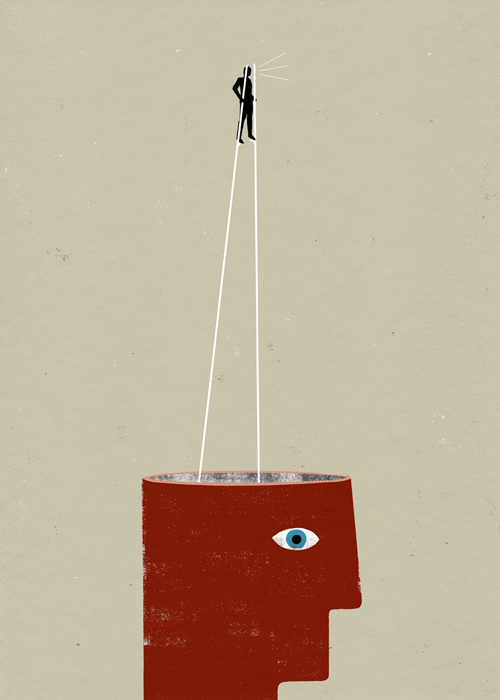
(image: “Ultracrepidarian: A person who gives opinions and advice on matters outside of one’s knowledge” from The Project Twins’ A-Z of Unusual Words)
I reckon this post about dancesplaining is good stuff. I like the way Jason expands the idea of mansplaining. Mansplaining is about power, and dancesplaining is about power. I like the way Jason has expanded the idea of explaining-as-power. He’s making the point that this act of power isn’t about biological sex, it’s about social power. This seems to be something that a bunch of commentary on sex and gender in dance getting about at the moment doesn’t seem to grasp.
In other words, while we might associate particular characteristics or qualities with masculinity or femininity (eg violence or aggression or technical know-how might be associated with masculinity in anglo-celtic discourse), they aren’t actually biologically determined. Men aren’t naturally aggressive or violent or good with tools (lol) because they have a bunch of testosterone or a dick or a brain wired in a certain way. Men often demonstrate violence or aggression or are the first to have a go with a tool because the society they grew up in encouraged them to be that way.
So mansplaining isn’t biologically determined, it’s an act of power, where the person explaining assumes they know more, and assume they have the right to speak/explain. When this explaining person is a man, explaining something to a woman, they’re often taking advantage of the fact that women in this same cultural context are brought up to be ‘polite’ and to avoid confrontation. That means avoiding interruption or telling an explainer that they already know this stuff. Avoiding conflict can also be about helping other people save face (and avoid embarrassment or loss of face/status). Many women help men save face to avoid conflict because in their experience conflict can often involve physical conflict: an angry, embarrassed man can be a violent man.
Danceplaining and mansplaining isn’t often malicious or deliberately dictatorial. It’s usually an unconscious demonstration of discursive power. Just as a man mightn’t stop to worry about whether that guy who just got on the train is about to sit next to them and make suggestive comments, a man who explains mightn’t stop to think about whether he should shoosh. In both examples, men have lived with the experience and idea that they will be safe on public transport, that they won’t be harassed, and that it’s ok to explore or explain their thinking out loud. Both of these public behaviours are about status, power and confidence in public space. They’re both also about the power of feeling safe enough to explore a new idea in front of other people.
If you want to have a bit of a read about the ‘mansplain’ concept, I suggest starting with Rebecca Solnit’s piece ‘Men Explain Things to Me: Facts Didn’t Get in Their Way’.
I like Jason’s piece because makes it clear that explaining – dancesplaining – isn’t necessarily about gender. While men might do it it women a lot in class, women quite often return the favour and explain to men why they’re doing things wrong. But I do think it’s about power, and I’d argue that certain types of power can be gendered (or associated with a particular gender identity) in certain contexts. So dancesplaining is often perpetrated more by men, and as most dance classes have more men leading than women, we see more leads/men dancesplaining to follows/women than vice versa. I’d probably add that a male lead teacher should be particularly careful not to paraphrase and repeat a point his female follow teaching partner has just made in class settings. That’s a type of mansplaining too.
Jason extends this thinking to explore how this type of behaviour in class affects the way we might think about leading and following generally.
I’d argue that dancesplaining (as a gendered behaviour) works with other gendered behaviour to create a continuum of gender and patriarchy. This is how discourse and ideology work: if it was just one little thing that bothered us (and we could fix with a quick solution), then feminism would be redundant within a couple of hours. But patriarchy is complicated. This is why I have troubles with the recent posts about ‘sexism’ on Dance World Takeover: the thinking is too simple, and the solutions are too simple. A reshuffling of ideas about connection isn’t going to magically solve sexism in a community. It might be one point at which we can engage with particular ideas about gender and power, but tackling that one thing this time will not quickly or easily ‘solve’ patriarchy.
If we are to engage with gender in the lindy hop world in a constructive way, we need to think about all sorts of stuff: clothes, notions of ‘beauty’ and ‘strength’, discussions about food and ‘health’, teaching practices, competition formats (eg how is a jack and jill competition judged, and how does this process articulate ideas about gender?), the role of solo dance, the place of aerials, how we manage and think about injuries and pain, ethnicity and race and how we think and talk about it in dance, talk about sex and sexuality in dance partnerships, labour relations and the role of ‘volunteers’ and unpaid labour, etcetera, etcetera, etcetera. Gender: it’s complicated.
This is why, though, I’m quite pleased by Jason’s piece. He takes one behaviour (or use of language and power), and then draws out the effects and related behaviours and thinking within a culture (and cultural practice). I’m especially delighted by the way he presents his own thinking and behaviour. This really is what I would call being a feminist ally. Doing feminist work. I am also very pleased by the way this thinking makes clear that feminist work can also be socialist work, and also be the work of pacifists and human rights activists. Feminism might be centred on gender, but we can’t talk about gender without also talking about economics, ethnicity, sexuality, violence, and so on.
I was especially delighted by this paragraph in the ‘establish permission’ section:
Both as a teacher and as a student, I have found it is often really helpful to approach first with a question along the lines of “Can I make a suggestion?” If he or she says “yes,” then we can proceed to having a discussion about it. If he or she says “no,” then I keep my opinion to myself unless that person is causing serious harm (in which case I might have led with something more direct like “I need to talk to you”). The act of asking for permission can feel a tad cumbersome but it respects the other person’s boundaries and gives them a moment to adjust to a state of readiness to hear feedback. It is the dance class equivalent of inviting someone to a performance evaluation rather than barging into their office and telling them they need to shape up or ship out.
I think this is a gorgeous illustration of how undoing the power dynamics (and hierarchies) of pedagogic discourse in dance can work to undo other dodgy power dynamics in a dance community. The class is, of course, where we socialise new dancers – where we teach them not only how to dance, but how to be in a dance community. It’s something I need to remind myself: though I might be a teacher, I don’t automatically have the right to correct someone’s dancing in class. And how I should correct them needs to be carefully thought about, to promote and encourage mutual respect.
If you’re curious, I’ve written other posts where I’m pretty much annotating the development of my ideas about teaching. I’m only new to teaching dance and boy am I making a lot of mistakes.
– Dealing with problem guys in dance classes: where I write a huge, long, rambly post exploring my ideas about this, and nut out some strategies.
– Self Directed Learning: where I look at alternatives to the formal dance class, and how this might destabilise hierarchies, and also complement traditional learning models.
– teaching challenges: routines, structure and improvisation in class: where I remind myself that rote-learning is about power and hierarchy, and not in the spirit of lindy hop.
– Teaching challenges 2: drilling and memorising: kind of like that previous post, but with some dodgy referencing of pedagogic lit.
– Valuing the process rather than the product: where I talk about a bunch of things, but most importantly, about the importance of being wrong and making mistakes.
good learnz, bro
To help myself remember where these useful posts are:
A manifesto should upset and excite. It is revolution, not reassurance.
This is another post I wrote ages ago, but didn’t bother posting it because I’m feeling pretty paranoid about the nasty responses my ‘feminist’ posts get. As though any post I write could not be feminist.
Anyways, a quick timeline: I first read about Frumious Bandersnatch’s post ‘A Feminist Lead’s Manifesto’ via Lindy Hop Variation’s For Followers’ post ‘Reactions to the female lead’s manifesto’. I read that post and thought ‘aw yeah, whatevs.’
Then I read the actual manifesto (which an awful lot of people on Faceplant didn’t seem capable of doing – they just waded into that response piece, instead of actually reading the original manifesto. I facepalm and I facepalm.)
I read it and thought ‘cool, a manifesto’. But I didn’t have time to reply, because I was busy being a female lead, a teacher, an event manager, etc etc etc. Too busy fighting the patriarchy to write about fighting the patriarchy.
This draws me to a discussion of the role of women’s studies as critical thinking vs feminism as activism. I remember an essay Nancy Fraser wrote about the importance of activism to feminism, arguing that theory is important, but the essential nature of feminism is to enact or work for social change. So, in other words, just talking and thinking and writing about it isn’t enough. I’ve just spent ten minutes trying to find the reference to the article, partly because there are some problems with Fraser’s position (or, more likely, of the way I remember that position), but I can’t find it. GODDAMM it. Anyways, the general point was/is that while theory and discussion is very important to feminism, activism – actually doing things is far more important. You can of course argue that thinking and talking about things does constitute activism (particularly in regards to language and power, but Fraser has things to say about structuralism and linguistics which I can’t go into here).
I’d argue that writing and talking about dance is important. The mediated experience of dance (particularly in terms of youtube videos reframing actual dancing) can be just as powerful – and is probably more pervasive for most people who don’t dance every day – than the actual dance act. But I feel, quite strongly, that talking about dance, eventually, has to give way to dance itself in terms of actual authority. In other words, it ain’t what you say about lindy hop, it’s the way that you do it that counts.
In my experience, if I really want to change things in the lindy hop community, I need to get out there and do it. Less talk, more action. The best way to get more women leads on the floor is to have women leads on the floor. And we gotta start somewhere. Someone has to be that first woman out there on the dance floor, leading. And fuck, I’m ok with being that first person (I took up this point in greater detail in I vant to be alone and lindy hop followers bring themSELVES to the dance; lindy hop leaders value this).
I do also think that it’s important to encourage other women to lead. That can mean just cheering when they’re rocking something on the social floor, asking them to dance yourself, or it can mean saying things like “Fuck, yeah, just get out there and have a bash” directly to them. And you don’t need to use activist or political rhetoric in this sort of encouragement. Really, leading is fun – so encouraging other people to have fun isn’t really a difficult project.
Despite this commitment to actions, I still think it’s important to think about things and to write about them. Because critical engagement with a topic is important. Off the dance floor, we have time to think about things, and to look for connections. We can look for the way systemic disempowerment – patriarchy – works. This is the nature of patriarchy: it is a complex system of actions and institutions and discourses and face to face activities.
If I feel so strongly about the importance of thinking and writing about gender and dance, why haven’t I written much lately, in a concentrated way?
- I get hate mail. And I just got tired of it, especially after that boob post. And I noticed that Parrot Cat and Lindy Shopper haven’t talked about it much either.
- This makes me ANGRY because it shows how attacking women keeps them quiet. It also ‘proves’ the bullshit idea that ‘being in public wearing an opinion’ is ‘dangerous’ for women. When, really, that’s bullshit. It’s no safer keeping quiet and not saying anything. All those attacks on those public women? They were attacks on all women, telling them to shut their mouths.
I have to pause here for a diversion. But it’s a relevant one. I have to talk about the current Australian political climate (Edit: here is a list of articles with more information). When the ‘Female Lead’s Manifesto’ was written, the first woman prime minister of Australia was the target of a sustained, furious hate campaign by the mainstream press and conservative politics, which eventually resulted in her being ousted from the leadership of the ALP (and hence the prime ministership). Anne Summers has written lots of interesting things about this, and I’ve heard Kerry-Anne Walsh’s book ‘The Stalking of Julia Gillard’ is a good overview of this whole issue.
If you’re a person with even half a brain, you’ll be furious about the way Gillard was treated, whether you agree with her actual policies or not. The misogyny, the hatred has been palpable. It’s been a scary time to be a woman in Australia.
So let’s return to the Female Lead’s Manifesto. The author is Australian, and I think that you’d have to have no media contact whatsoever to have missed the horrid shit happening our media sphere. So this manifesto was written in a particular moment in Australian political and social history. Let me spell it out for you: if you were living in Australia, consuming Australian media, you would have clearly received the message that ‘women leaders are fucked up, bad, and awful.’ …not that this is unique for women leaders in any patriarchal country.
Do I go too far in reading lindy hop ‘leads’ as ‘leaders’ in the same way that a PM is a leader? No. No. No. Leaders decide policy, followers enact that policy. The lead is the PM, the follower is the government. Two different types of power. It is a fairly stretched point, but I think the theory is the same: there is a sense in both dance and political discourse, that the ‘natural’ state of things is for men to lead and women to follow. Hence the resistance to using gender neutral language in dance classes: it is as though teachers cannot even imagine that women can be competent, serious, focussed leaders. So language needn’t change to reflect this idea: that women lead.
Let’s get specific. How did I feel about the Female Lead’s Manifesto? Generally, I thought ‘ah, this is a manifesto. It is a personal statement of intent. It is for this woman, to rally her reserves. It’s not exactly as I would have written it. But then, it’s not my manifesto.’
Faced with the creeping, dragging weight of patriarchy in dance, we all need a little pick me up now and then. So even though it’s not my manifesto, I’m still excited by it. It lifts the spirits.
Let me really get into it, now:
Frumious Bandersnatch makes this clear at the beginning:
Fuck the heterosexist patriarchy, I’m a female lead and I’m not making excuses for it. This post is not a list of reasons to validate the existence of females leads, this is a manifesto.
Yes. This is thrilling. I am not making excuses. I am not validating. I am telling you HOW IT IS.
This is exciting. For a woman to simply state, with no prevarication or excuses, how she feels, is exciting. And for this statement to be such a rallying call! Such a provocation! She’s not apologising for having ideas! She is DECLARING!
This is what a manifesto should do. It is a declaration of ideas and intent. This is HER declaration of HER ideas and HER intent. Speaking it makes it so.
The second part is more challenging. This is the really provocative part:
This manifesto starts with the premise that most leads are men and most followers are women. When we first start dancing we are usually not given a functional choice – even if we are told that women can be leads, we see that the vast majority of women are followers. There is overwhelming pressure for us to be followers too, especially when we’re new and just beginning. I will even go so far to say that all female leads know how to follow to some degree.
How exciting! Yes, I agree with the first sentence. And the second. Not the third – I know women leads here in Sydney who don’t follow, can’t follow, will NOT follow. This is hardcore. I am so impressed, so envious. They are much fiercer than I am. Much stronger in their convictions. This is exciting.
…but here is where I need to pause. What does it matter that I agree or I disagree? This is not a call for discourse, or an invitation to conversation. This is a MANIFESTO. In this piece, the author is REMAKING THE WORLD. How exciting!
Why don’t I just play along? Why don’t I just accept it as read, that women are better leads than men? Why can’t I just pretend. Or at least accept the premise of this scenario. What would the world look like?
IMAGINE:
a world where women lead better, more, than men.
Imagine a world where most cops are women, most judges, most politicians. IMAGINE!1! It’s just so exciting, just so revolutionary and destabilising a thought. And it’s exciting because it is so far from my lived reality. It will not happen in my lifetime. And that is why it is exciting: it is forbidden, unlikely, subversive, transgressive, revolutionary. REVOLUTIONARY.
And that is because the inverse is true.
I don’t think most men stop and think… heck, most women don’t stop and think about the fact that most positions of power are occupied by men in our society. No, biology has nothing to do with it. My uterus is not preventing me from running the world.
Now, here’s a truly radical thing: gender switch the main characters in CSI. Of your news readers. Of your school teachers. Of your bus drivers. Imagine! Just the thought is making me giddy. Everywhere: women being and being portrayed as publicly capable and competent, and more important – being respected and treated as capable and competent! FUCK!
Now, pause. If you’re Swedish or Danish or generally from a more progressive country, this won’t rock your world. But here, in my country, this is our first woman national leader. This is amazing. AMAZING. This has NEVER HAPPENED BEFORE, in two hundred years of white history. This is THE FIRST TIME a woman has been the leader of my country. Finally, there’s someone like me being powerful and competent in public.
So when the Female Lead’s Manifesto is written, it is saying, not ‘imagine’, but IT IS SO. Who are we to disagree? How do we know this isn’t true? Sure, you might have anecdotal evidence to the contrary, but what if it’s true generally? This is mind-blowing thought. And why not – why can’t we just accept this? Why can’t we imagine the impossible, the improbable, the unlikely? If it feels revolutionary to imagine half the women in your scene leading, then how revolutionary is it to imagine ALL of them leading, and being BETTER at it than men! It’s mind-blowing!
And if you won’t – why not? If you can’t – what’s wrong with you? Why can’t you imagine women being better than men? Can’t you let go of your assumptions about gender, that somehow men are always going to be better? Every day patriarchy asks us to accept that all men are better leaders than women, that more men lead than women. And even though most of the time we have no clear statistical evidence to support this claim, we just accept it.
I’m not saying we have to enact this gender switch. Or even believe it. But why can’t we just imagine women this way? What does this imagining do to the way we see the world? This make-believe stretches our brains. It broadens our horizons. We’re jazz dances. We do the impossible every day! We create the amazing every time we move! Jazz dance is ALL ABOUT revolution and radicalism! So what’s stopping us?
Because, every single day, we are expected to accept that a woman can’t be as good a prime minister as a man. That a woman can’t lead as well as a man. That a woman can’t run a business as well as a man. Every single day, every moment of my life, I’m being told – by everything around me – that I am not as good as a man at leading. And I’m supposed to just accept this and treat it as normal. EVERY SINGLE DAY I am being treated by everything around me as though I am an object to be ogled, there for the desires of any man who may want me. EVERY SINGLE DAY I am being told that I am in danger, and that it is my own fault. EVERY SINGLE DAY my leading on the social dance floor or as a teacher or in competitions is made unusual, remarkable, strange, unusual, radical, unnatural. And I’m not even running a bus, let alone a whole country! If I can’t be trusted with these decisions, how can I be trusted with the whole country?!
So what I want to know, is not whether you agree with the Female Lead’s Manifesto, but WHY aren’t you furious about the fact that I am being told – all the time, by everything around me – that this Manifesto is a lie? That ONLY men can lead?! And that ALL men are necessarily better leads than women!?
WHY aren’t you jumping to your feet in rage when people tell you this?
My question is not “why are you angry about the Female Lead’s Manifesto, but why ARE YOU NOT angry EVERY DAY about the things that women are told by our culture?” If you can’t imagine that a woman can do one part of a dance, how can you possibly begin to imagine that a woman could be prime minister or drive a tank or perform surgery?!
Just as importantly, why AREN’T you enraged that men make up so few of our follows? What’s wrong with following? Why don’t you want it as badly as you want leading?
Apparently men are supposed to be ok with the idea that they shouldn’t want to follow/wear a dress/be associated in any way with femininity.
Finally, I need to tackle just one piece the ocean of stupid that flowed after the Female Lead’s Manifesto. Someone asked about the piece (inevitably, stupidly, painfully), “Isn’t that sexist?” and I’ve heard a variant “Isn’t that reverse sexism?”
No, friends, this isn’t sexism. You must remember: we are not starting from a level playing field. We are living within patriarchy, where everything is loaded in favour of a select special interests group within our community: white, heterosexual, middle class, able bodied men. This minority holds the majority of power, of money, of resources, of public space, of media space. Sexism is dependent upon context. It is a relationship of relative power. I don’t have time to spell it all out for you, so I’ll just redirect you to Feminism 101, where someone with more patience explains things to you.
The most annoying part of patriarchy is that it has convinced you – us – that this is normal. That it is an inevitable consequence of biology or divine intention. That women are not 51% of lindy hop leaders because we have a uterus or too little testosterone or too little body hair.
Understand this (for this is how it is): women are not 51% of lindy hop leaders because some fuck has told us we’re not capable of it. Some fuck has made it harder for us to lead than to follow. Someone has made it easier for us to follow and for men to lead. I am being deliberate about intentionality here. Don’t just accept that ‘society makes it so’ or that the reasons are ‘too complicated’. My being afraid to post a comment on gender in dance isn’t complicated. It’s fucking simple. IT IS SIMPLE.
So you need to look at simple solutions. YOU. Assume that there are things that you can do, and that these aren’t complicated. Start small. Start with things YOU can do.
So ask yourself: are you that person telling women they can’t lead? When you stand up in front of a dance class, are you making it easier for women to follow and men to lead? Gender neutral language is such a tiny, small thing. Why haven’t you taken it up? What’s wrong with you? You’re a fucking JAZZ DANCER, man, of COURSE you can use gender neutral language!. I mean, there are a million other things you could be doing to improve the ratio of female:male leads in your scene. Who rotates in your classes – leads or follows? How many female leads do you have teaching? How often do you reference women dancers when you talk about dance history? Do you know who Norma Miller is? Do you stop yourself saying things like “It’s traditional for women to follow and men to lead?” If you don’t, what’s wrong with you – that statement is untrue!
What are you doing to make your lindy hop scene a more interesting place? Remember, if only 0.4% of your women dancers are leads, then you are robbing your scene of the other 99.6% of women who may consider taking up leading. Not every woman might want to lead. But why not assume that every woman can lead? That every woman is potentially a better lead than every other man?
You know, that if women have this, if men have this – this one point of rebellion of self-worth and power – they are putting just one more pebble onto that bridge. They are one step closer to fucking the patriarchy. It will give them the confidence to do things, to be things, to imagine themselves as more, better, bigger, the best.
If that is the case, then, what are you doing to make it possible for women to take up leading?
Assume that, despite your best efforts, you only get 50% of your women leading. Isn’t that a real triumph?
WHAT are you doing to improve things? What is your manifesto? WHY AREN’T YOU ANGRY?


